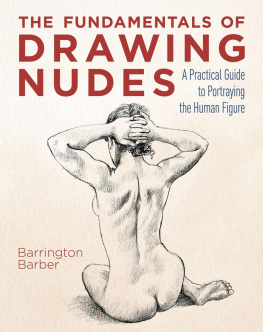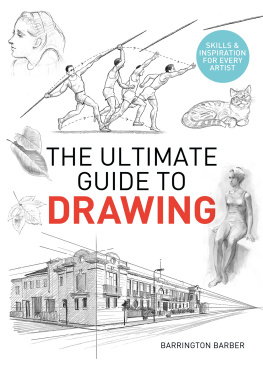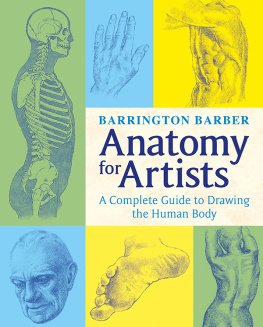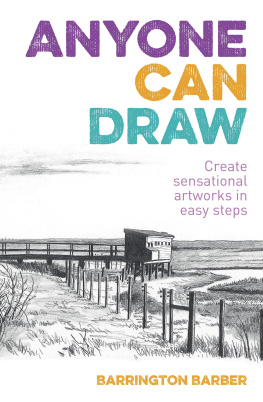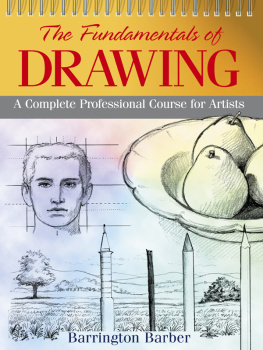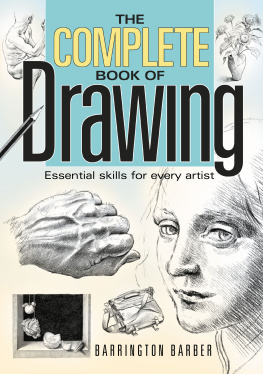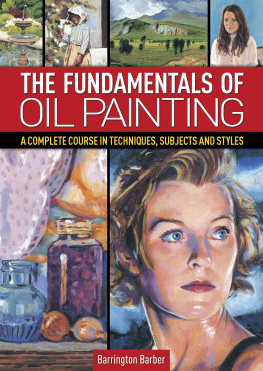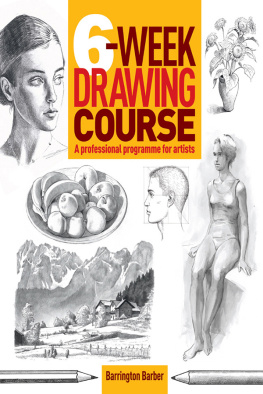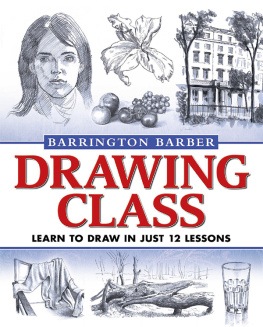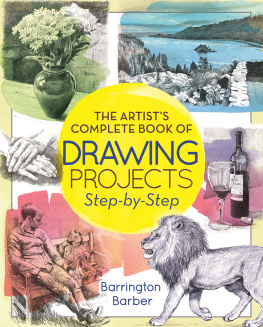Barrington Barber - The Fundamentals of Drawing Nudes
Here you can read online Barrington Barber - The Fundamentals of Drawing Nudes full text of the book (entire story) in english for free. Download pdf and epub, get meaning, cover and reviews about this ebook. year: 2021, publisher: Arcturus Publishing, genre: Home and family. Description of the work, (preface) as well as reviews are available. Best literature library LitArk.com created for fans of good reading and offers a wide selection of genres:
Romance novel
Science fiction
Adventure
Detective
Science
History
Home and family
Prose
Art
Politics
Computer
Non-fiction
Religion
Business
Children
Humor
Choose a favorite category and find really read worthwhile books. Enjoy immersion in the world of imagination, feel the emotions of the characters or learn something new for yourself, make an fascinating discovery.
- Book:The Fundamentals of Drawing Nudes
- Author:
- Publisher:Arcturus Publishing
- Genre:
- Year:2021
- Rating:4 / 5
- Favourites:Add to favourites
- Your mark:
- 80
- 1
- 2
- 3
- 4
- 5
The Fundamentals of Drawing Nudes: summary, description and annotation
We offer to read an annotation, description, summary or preface (depends on what the author of the book "The Fundamentals of Drawing Nudes" wrote himself). If you haven't found the necessary information about the book — write in the comments, we will try to find it.
The Fundamentals of Drawing Nudes — read online for free the complete book (whole text) full work
Below is the text of the book, divided by pages. System saving the place of the last page read, allows you to conveniently read the book "The Fundamentals of Drawing Nudes" online for free, without having to search again every time where you left off. Put a bookmark, and you can go to the page where you finished reading at any time.
Font size:
Interval:
Bookmark:


The nude human figure is both the hardest and the most satisfying subject for any artist. It is technically challenging, as viewers of your work will know the proportions and movements of the human body and may spot any mistakes. But for you as an artist there is great interest in attempting that most subtle and mobile of subjects the living human body.
The aim of this book is to explore the practices necessary to achieve a good level of drawing the nude human figure. We shall look first at how the body is formed, from its skeleton the structure that all figures are based on down to the details of the torso, limbs, the hands and feet and the head. A certain degree of scientific information is most helpful for understanding how the shape of the body alters with for example the movement of the limbs and torso. Without at least a little knowledge of anatomy, it is difficult to impart a sense of flow and movement to your figure drawing.
Once you have some knowledge of how the average figure is constructed you can consider how to go about drawing it. To draw the nude form effectively, you really need to study a figure from life, either at a life class or at home if you are fortunate enough to have a model available. When working with a model, you should consider not just their individual appearance but also the lighting, the pose you want to draw and how long you want them to hold the pose. I will suggest how you might go about making your first drawings of the figure before developing your skills to render it as a convincingly three-dimensional form. Dynamic poses bring new challenges as you identify the more unusual forms the body can take, while capturing a figure in movement will require an experimental approach.
The techniques of drawing will also be examined, and the ways in which different artists have portrayed the human figure, from the most detailed renditions to the most expressive. Of course, this book does not pretend to be exhaustive, as life drawing has been developed and explored over centuries as artists have sought new ways of portraying the human form. With the infinite variety of individual bodies and the range of movement and poses they can adopt, an artist focused on life drawing never runs out of opportunities.

You dont need to buy all the items listed below, and it is probably wise to experiment: start with the range of pencils suggested, and when you feel you would like to try something different, then do so. A good-quality eraser (preferably a kneadable putty eraser) is essential, along with a craft knife or sharpener. A paper stump is also useful for smoothing over your shaded areas.

Pencils B 2B 4B 6B
The normal type of wooden-cased drawing pencil is, of course, the most versatile instrument at your disposal. You will find the soft black pencils are best. Mostly I use B, 2B, 4B and 6B. Very soft pencils (7B9B) can be useful sometimes and harder ones (H) very occasionally. Propelling or clutch pencils are very popular, although if you choose this type you will need to buy a selection of soft, black leads with which to replenish them.

Carbon pencil
This can give a very attractive, slightly unusual result, especially the dark brown or sepia, and the terracotta or sanguine versions. The black version is almost the same in appearance as charcoal, but you cant rub it out so easily if you make a mistake.

Graphite stick

Graphite pencil
Graphite pencils are thicker than ordinary pencils and come in an ordinary wooden casing or as solid graphite sticks with a thin plastic covering. The solid stick is very versatile because of the breadth of the drawing edge, enabling you to draw a line 6 mm (1/4 in) thick, or even thicker, and also very fine lines. Graphite also comes in various grades, from hard to very soft and black.

Fine nib pen

Fine line pen
Push-pens or dip-pens come with a fine-pointed nib, either stiff or flexible, depending on what you wish to achieve. Modern fine-pointed graphic pens are easier to use and less messy but not as versatile, producing a line of unvarying thickness. Try both types.
The ink for dip-pens is black Indian ink or drawing ink; this can be permanent or water-soluble. The latter allows greater subtlety of tone.

Willow charcoal
In stick form this medium is very useful for large drawings, because the long edge can be used as well as the point. Charcoal pencils (available in black, grey and white) are not as messy to use as the willow sticks but are less versatile. To keep charcoal drawings in good condition they must be fixed with a spray-on fixative to prevent smudging.

Cont stick
Cont crayon comes in different colours, different forms (stick or encased in wood like a pencil) and in grades from soft to hard. Like charcoal, it smudges easily but is much stronger in its effect and more difficult to remove.

Pastel/chalk
If you want to introduce colour into your figure drawing, either of these can be used. Dark colours give better tonal variation. Your choice of paper is essential to a good outcome with these materials. Dont use a paper that is too smooth, otherwise the deposit of pastel or chalk will not adhere to the paper properly. A tinted paper can be ideal, because it enables you to use light and dark tones to bring an extra dimension to your drawing.

Font size:
Interval:
Bookmark:
Similar books «The Fundamentals of Drawing Nudes»
Look at similar books to The Fundamentals of Drawing Nudes. We have selected literature similar in name and meaning in the hope of providing readers with more options to find new, interesting, not yet read works.
Discussion, reviews of the book The Fundamentals of Drawing Nudes and just readers' own opinions. Leave your comments, write what you think about the work, its meaning or the main characters. Specify what exactly you liked and what you didn't like, and why you think so.

